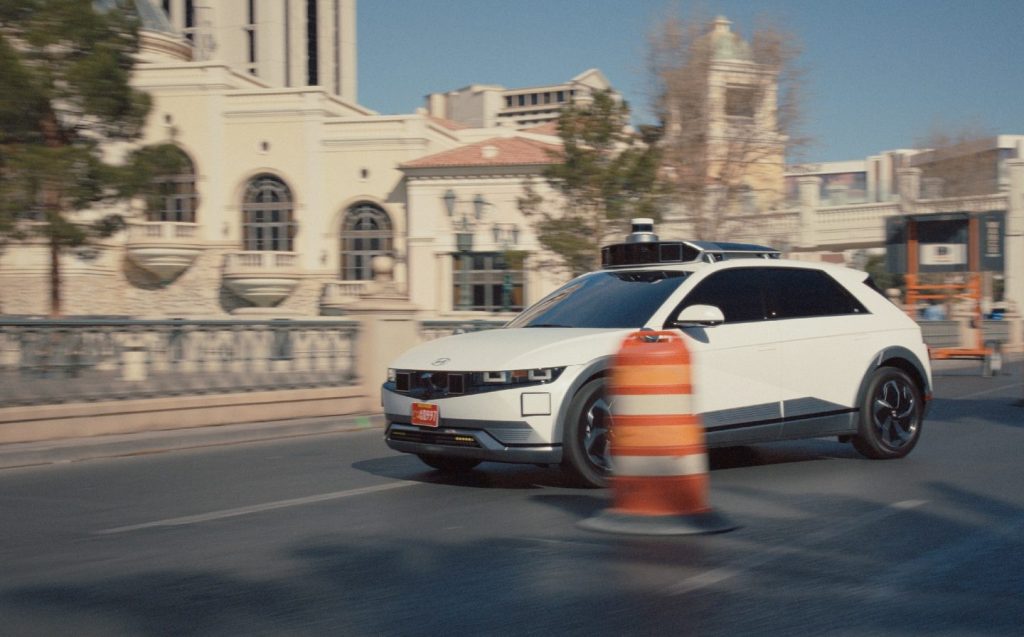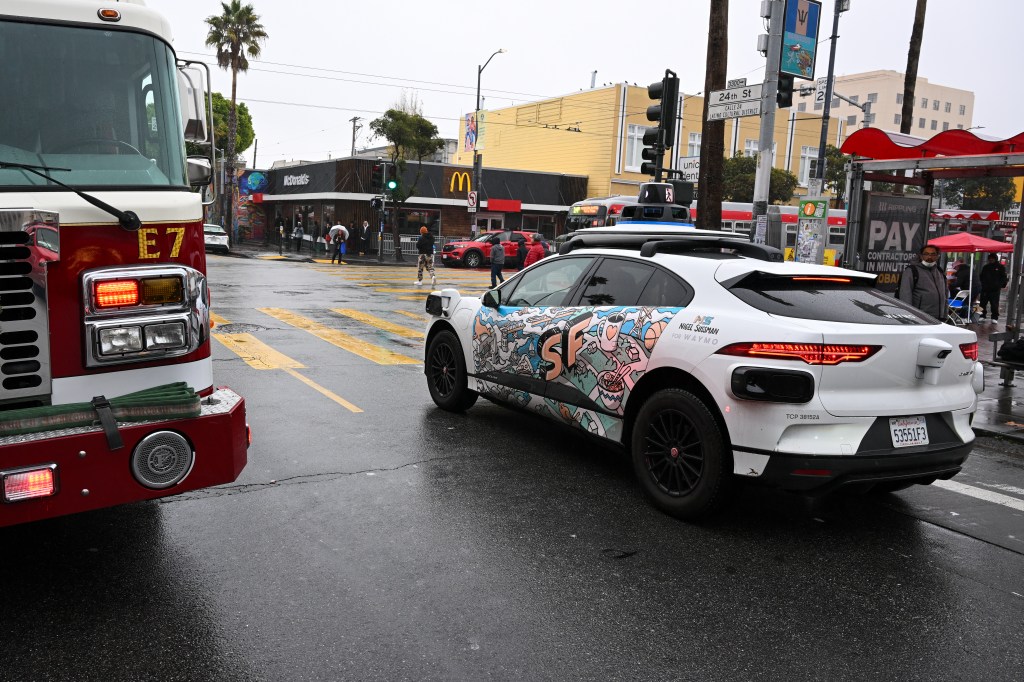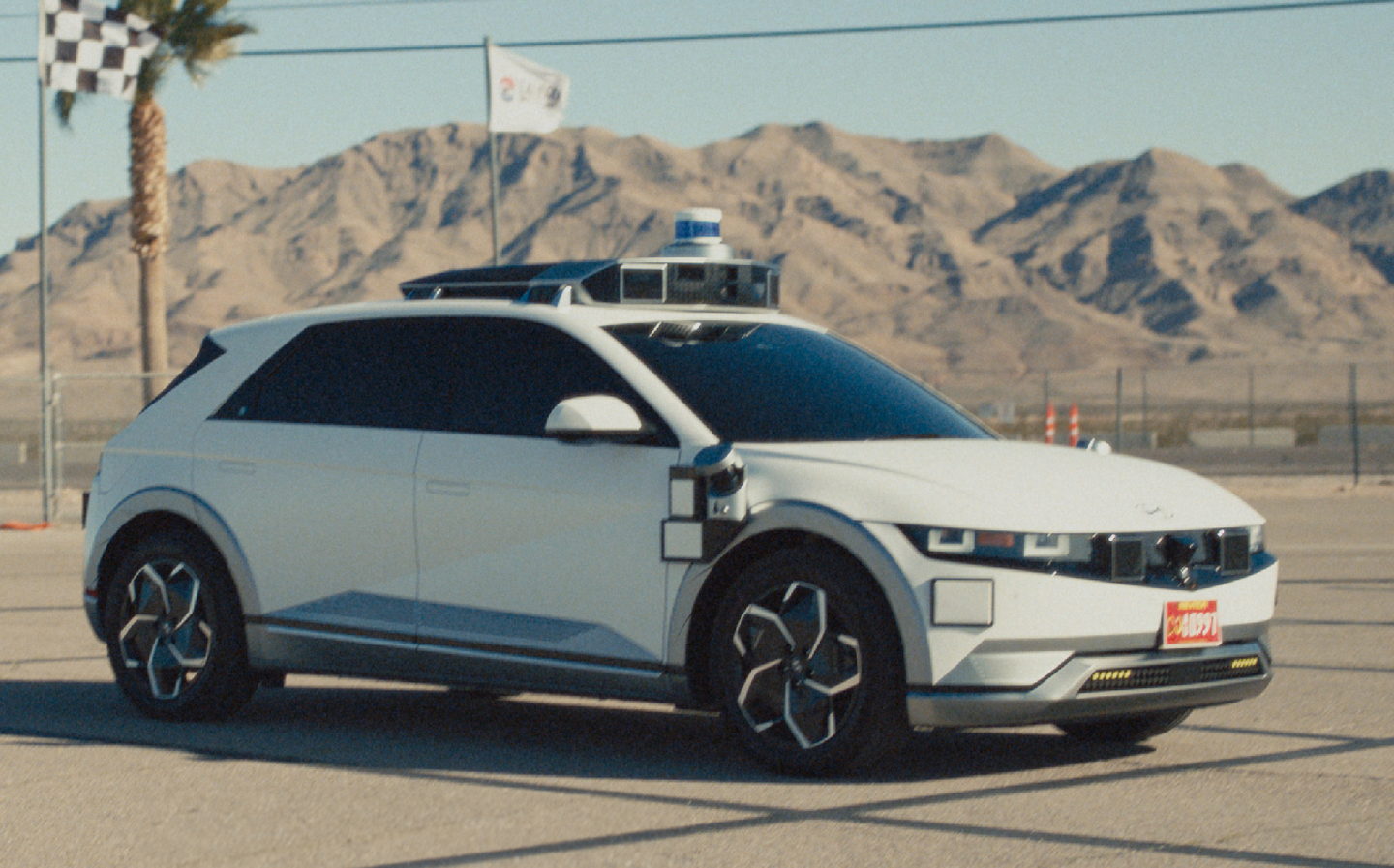Watch driverless Hyundai take American driving test
Does this help you trust that self-driving vehicles could get you places safely?
Human or robot… which is better at driving? Hyundai has released a video which puts that question to the test in a literal sense: by seeing if one of it’s self-driving Ioniq 5 electric cars can gain a driving licence.
The car in question has not passed an official driving test and has not attained a valid licence in America, where the video was filmed, but an accredited examiner was sitting in the passenger seat and checking each manoeuvre as they would in a real exam.
Kandice Jones, invigilating, said she assessed the car to the same criteria as a human driver, monitoring speed, lane changes and turns.
According to Hyundai, the car “excelled, impressing with its speed control, lane changes and manoeuvring, its ability to accurately stop at a stop sign, perform left turns, and its reaction time to developing hazards.”

Tech designed to offer ‘freedom of mobility to all’
Hyundai dedicated its success with the technology to all those who cannot take their driving tests due to health conditions or disability.
The company believes its driverless technology will “safely provide freedom of mobility to all,” and hopes the footage will highlight the car’s “reliability” and “potential.”

“As a company that pursues freedom of mobility, we at Hyundai aim to exhibit the safety and trustworthiness of the Ioniq 5 robotaxi through this campaign,” said Sungwon Jee, senior vice-president and global chief marketing officer at Hyundai Motor Company.
“We will continue our efforts to communicate our AI-based autonomous driving technology, which is set to provide positive changes to our customers’ everyday lives.”
Not the first robotaxi
The introduction of a robotaxi — a driverless vehicle that can be hailed from an app such as Uber — is nothing new. Numerous cities around the world have licenced robotaxis for use on the public road, and operators are already hitting the market.
A number of other self-driving vehicle trials are taking place worldwide, with various autonomous vehicles roaming public highways.

However, issues have blighted the nascent technology. American operator Cruise was one of the market leaders in California, but a serious accident in San Francisco last year, followed by another more recently, caused the state to end Cruise’s operations. Since then, the company has reportedly taken all its vehicles off the road. Meanwhile, in February, a driverless taxi from Waymo was attacked and set alight by a mob in San Francisco.
Robotaxis coming to the UK?
In the UK, despite the government’s apparent desire to make the country a key hub for autonomous vehicle development, driverless cars are not yet commonplace, and it’s still a legal requirement for human drivers to be in control of their vehicle at all times. That means eyes on the road and hands on the wheel.
In November, though, the government described the autonomous vehicle sector as an “exciting, £42 billion industry” and the Department for Transport (DfT) has pledged to “deliver one of the most comprehensive legal frameworks of its kind anywhere in the world for self-driving vehicles, with safety at its core.”
In a statement, the DfT said the new Automated Vehicles (AV) Bill, the terms of which are currently being drafted, will ensure driverless vehicles “meet or exceed rigorous new safety requirements, set out in law.”
Under the terms, all self-driving vehicles will have to undergo “robust safety testing” before they are permitted to drive on UK roads, while every vehicle will have an Authorised Self-Driving Entity, which will be responsible for the behaviour of the vehicle. It’s expected this will usually mean the manufacturer.
The government has also promised the new Bill will prohibit the use of “ambiguous terminology in advertising material,” with failure to meet the new criteria constituting a criminal offence.
Announcing the bill, transport secretary Mark Harper, said: “Our new bill ensures safety is at the heart of our plans to see self-driving vehicles on our roads, making the UK a great place to develop this technology.
“We have the opportunity to put the UK at the forefront of a fast-growing, multi-billion-pound industry by providing the clarity and certainty for business to develop and invest in this exciting technology.”
Related articles
- If you were interested in Hyundai’s autonomous-driving technology, you may want to check out what Hyundai’s boss said about flying cars
- Read about the British start-up planning 200 flying taxi hubs globally
- Or read more about how Ford got approval to allow hands-free driving on UK motorways
Latest articles
- Aston Martin Valkyrie AMR-LMH hypercar hits track ahead of 2025 Le Mans challenge
- Porsche has begun testing the electric Cayenne
- Cupra Leon 272 eHybrid 2024 review: Bigger battery, better tech … but is it a Cupra?
- Porsche 911 GTS 2024 review: Hybrid heresy or more Stuttgart genius?
- Extended test: 2023 Vauxhall Astra Sports Tourer GS PHEV
- Ford Capri revival has faced a lot of flak… but are buyers put off? Here’s what visitors to the Festival of Speed had to say
- F1 2024 calendar and race reports: What time the next grand prix starts and what happened in the previous rounds
- ‘No timeframe’ for how long Volvo’s returning estate cars will be on sale in UK
- Kia Picanto 2024 review: Updates add spice to cute Korean city car














